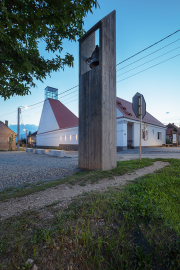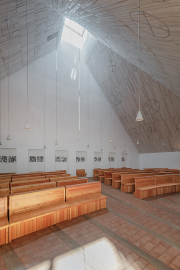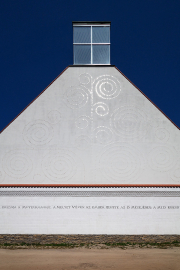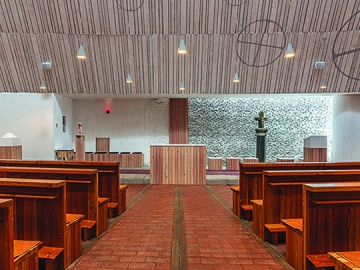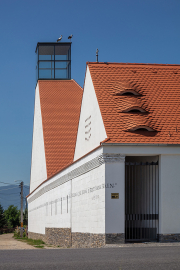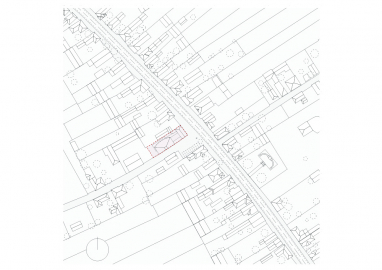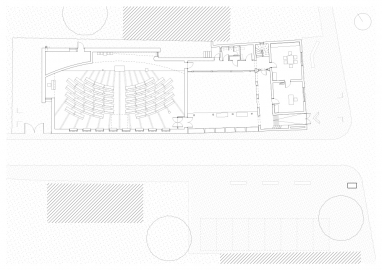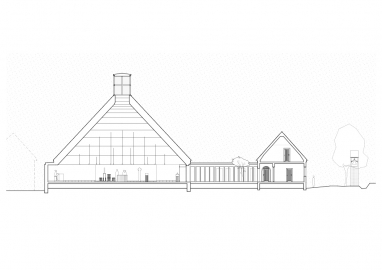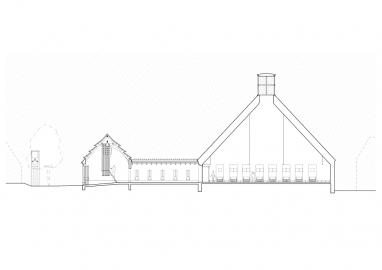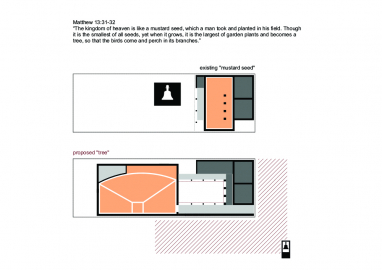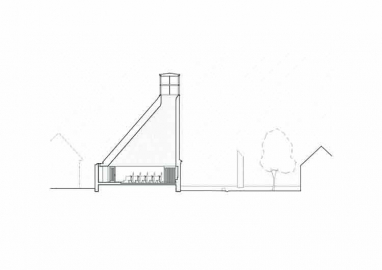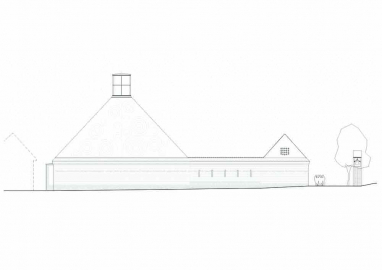Saint Anne Chapel
“The kingdom of heaven is like a mustard seed, which a man took and planted in his field. Though it is the smallest of all seeds, yet when it grows, it is the largest of garden plants and becomes a tree, so that the birds come and perch in its branches.”
Mt 13:31-32
After the arrival of the railroad, in the vicinity of Siculeni village a railway hub was formed providing the main link to Moldova. This generated activity around the railway station, and the village developed along a new road parallel to the rails. The linear row of houses seemed impossible to interrupt, a consistent order having as its only accents the railway station and a memorial. The village is firmly rooted into the mental map of the region, due to the genocide of 1764 that took place nearby. The interest sparked by the trains moved the center of gravity of the settlement. In the last decades, the new part searched for its identity also in religion, fitting a modest chapel into one of the abandoned railway dwellings.
The proposed chapel, situated on the corner of an alley, offers to silently preserve the order of the rows of houses without proposing any accent in the urban fabric. To compete with the old church for being the center of the village was undesirable, also to create any sort of friction inside the community. The project partially preserves the old prayer room, so that the street facing tract remains untouched and the former liturgical space becomes a quiet patio, introverted and hidden from the noise of the street.
Thus the outline of the prayer room becomes a garden, like the grain which trough light and earth disappears, giving birth to a plentiful harvest. After this opening cloister, the simple yet marked body of the new chapel appears, set back into the row of orderly aligned barns in the background.
The narrow size and shape of the plot gives a rhythm to the new spatial formula, especially to that of the chapel which inside the simple volume is basically a tense central space. This immense protective skirt, with a shape reminiscent of local traditional garments, builds up an allegory of the Grandmother, Saint Anne being the mother of the Virgin.
The preserved tract towards the road gains a distinct pillar, a portico for the belfry as starting point for a ramp towards the patio and chapel. This row of spaces materializes as a massive wall framed by two pillars, of which the volume of the chapel distinguishes itself through a silhouette with subtle references to historical chapels of the region. The spatial composition is crowned by the glass skylight, a spatial cross as the single glazed element in the introverted structure of the chapel. The hand-crafted nature of the materials, the texture of the facade with the Tree of Life alluding to the Kingdom of the Lord through the faith invested in the mustard seed is later picked up on by the entire facade through a subtitle-like, never ending media stream. These represent brief pastimes and aim towards timelessness and depth, while keeping alive a silent dialogue with the surrounding architecture.
The techniques used on the outer shell of the building are carefully thought out to make do without sophisticated insulation, thermal comfort during wintertime being ensured by heating the floor with high thermal mass that keeps a warm microclimate in the people’s proximity.

